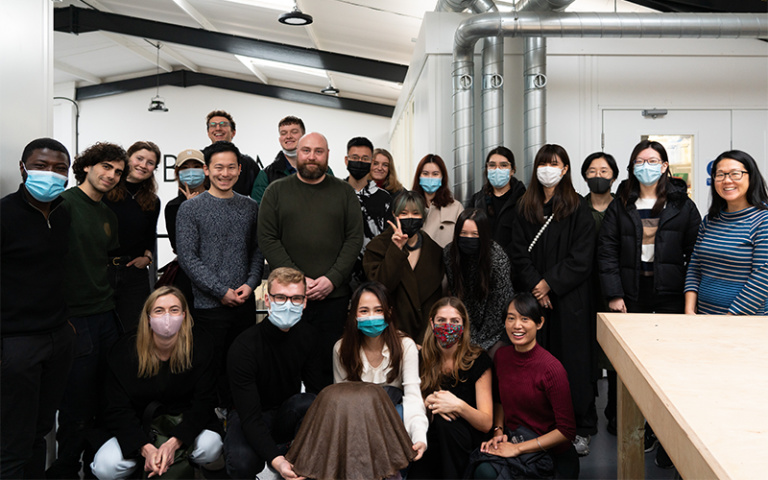Moving Sustainability from Prevention to Regeneration
2 December 2021
Sustainable Resources: Economics, Policy and Transitions MSc Programme Assistant Peter Sarpong reflects on students visit to Biohm, a company founded on circularity and biomimicry, for inspiration in the coming years.

The term sustainability is often practically misrepresented as only preventing excessive extraction when it can be more than that. Students of the 2021/22 Sustainable Resources: Economics, Policy and Transition MSc (SR:EPT) programme, as part of the 10-year anniversary of the Institute for Sustainable Resources, visited Biohm, a company built on the principles of circularity and biomimicry for inspiration towards the next decade of sustainable businesses and research.
Having seen how Biohm transforms waste to building materials, students had the opportunity to engage employees on how relevant their coursework was to the business. Harry Darkly, Director of Operations at Biohm, had this to say: "How do we get to a point where we shift focus beyond prevention, where we use less to create more in our system, where we give back more than we extract? How do we make society better for the next generation? This involves seeing sustainability as more than a prevention mechanism to include regeneration. At Biohm, these are the sort of challenges we work on. By studying how nature functions, we adapt our manufacturing process to take less from biodiversity. This should be the full-time consideration of the next generation of leaders in sustainability science. Just like the principles of recycling, and then sustainability, received pushback in their earlier days, the concept of regeneration is also facing some pessimism. However, we must start conceptualising and building regenerative societies - in manufacturing, agriculture, construction and the like. These are the ideas for the next decade of sustainability champions and the hope is that you will consider this in your careers and research.”
Students had the opportunity to engage and understand some of the concepts used in class bringing out their critical thinking. This was depicted in the numerous questions during the tour. Matthew Dunne, a student from the cohort, had this to add about the programme and the tour: "What was fantastic to see in Biohm is nature-based solutions being brought to the forefront of sustainability challenges. As a former architecture student following on from experimental work of researchers such as Neri Oxman at MIT for biologically based construction materials, it is extremely exciting to see alternative approaches to these experimental ideas being developed towards the scalability required for real impact in industry where they can be implemented. The enterprise thus highlights the role of green innovation in providing solutions to these challenges and the importance of subsidisation in ensuring that independent innovators such as start-ups receive adequate support to develop future solutions that push the boundaries, aided by policies and transitions from a solution-driven approach”.
Find out more about the Sustainable Resources: Economics, Policy and Transitions MSc
 Close
Close

